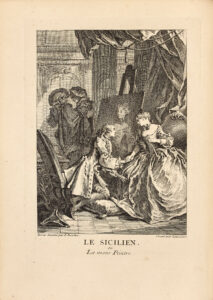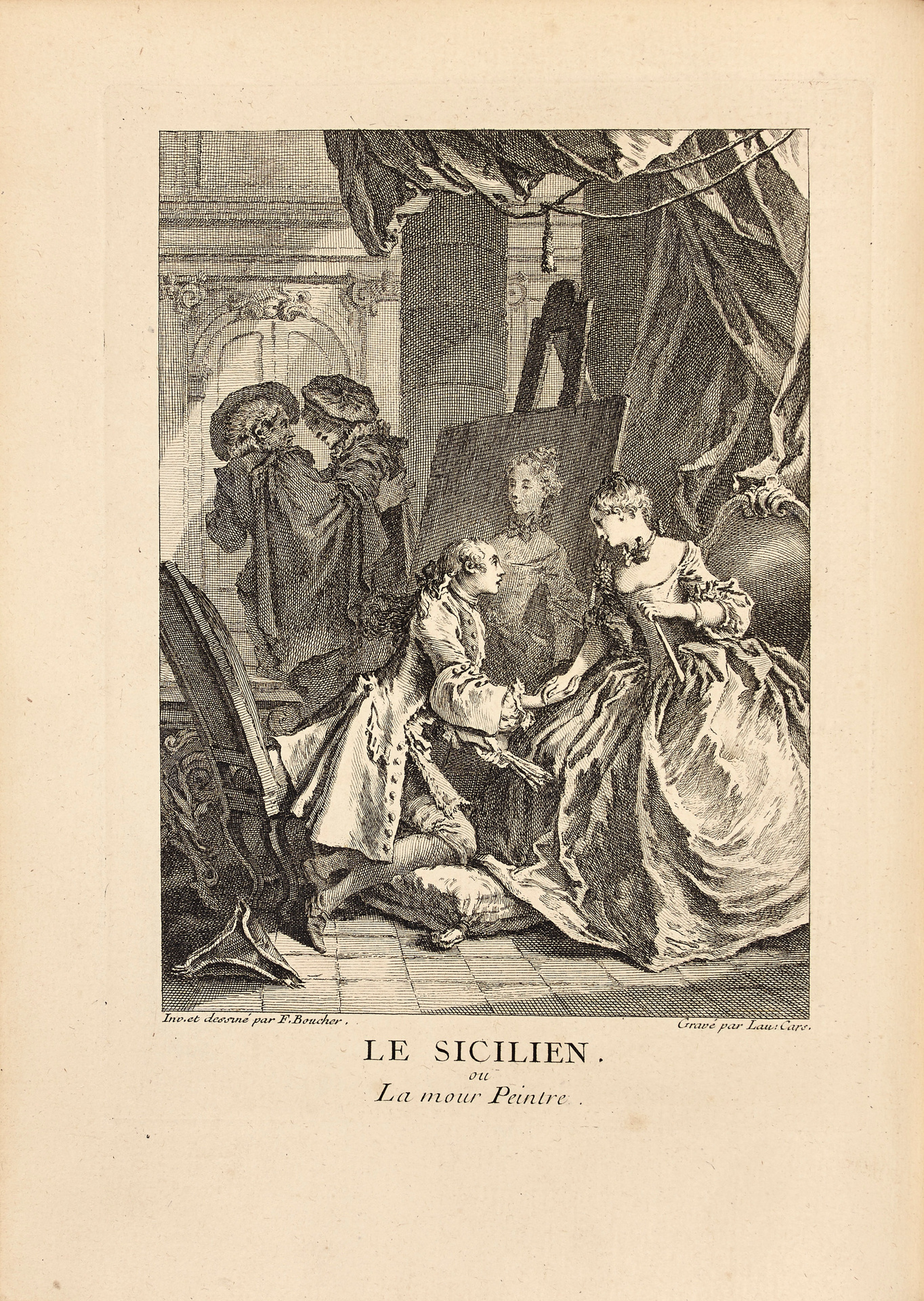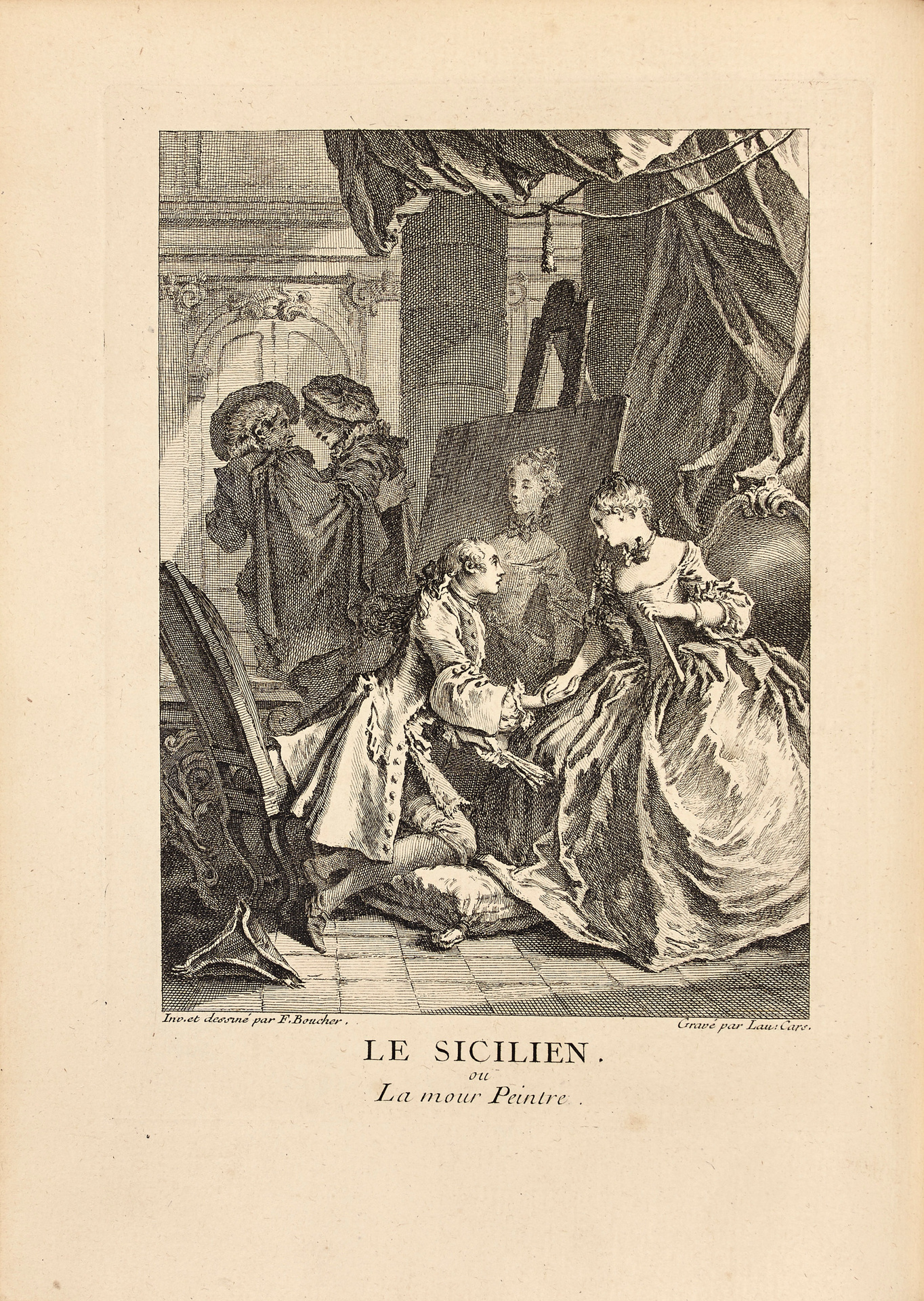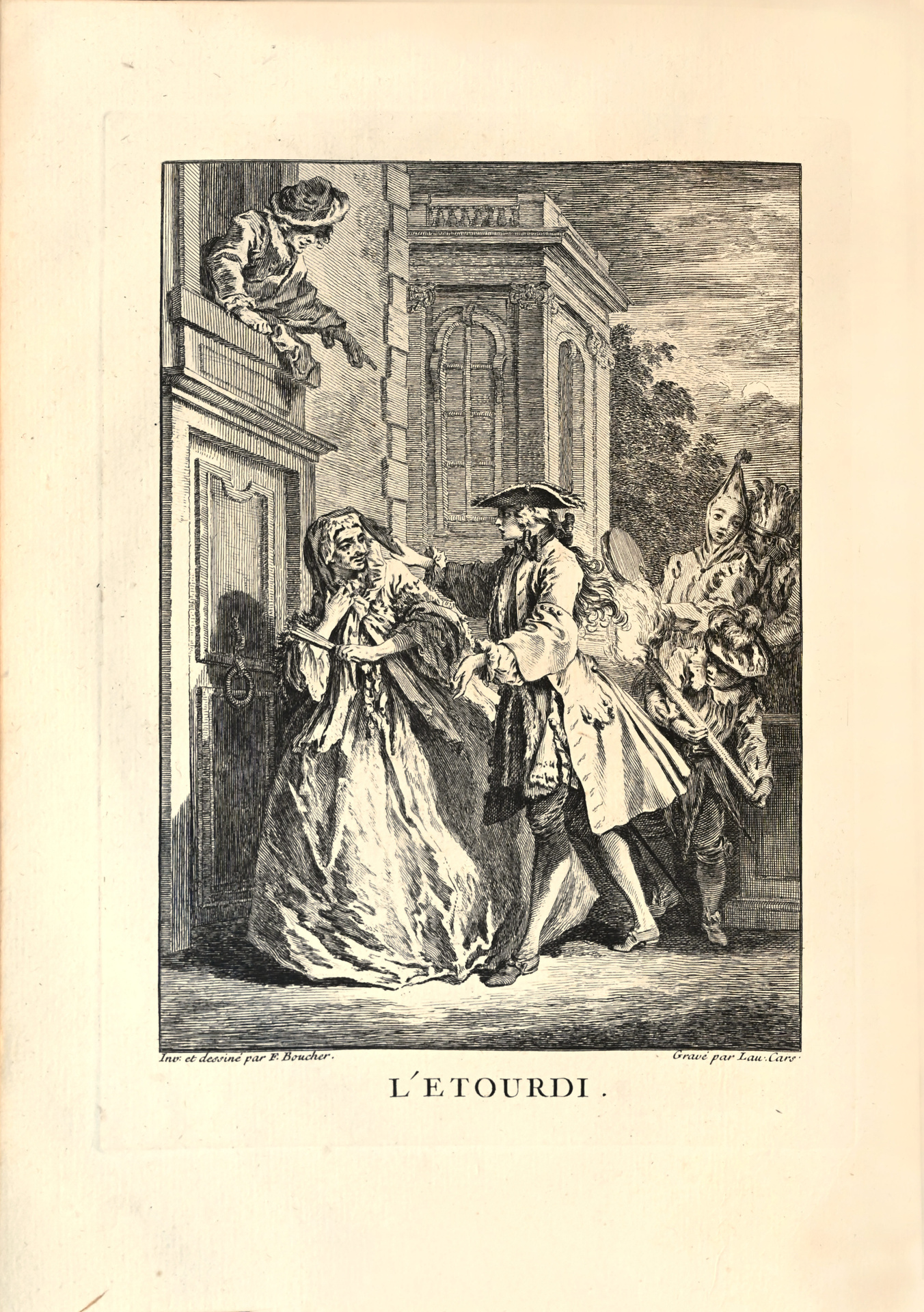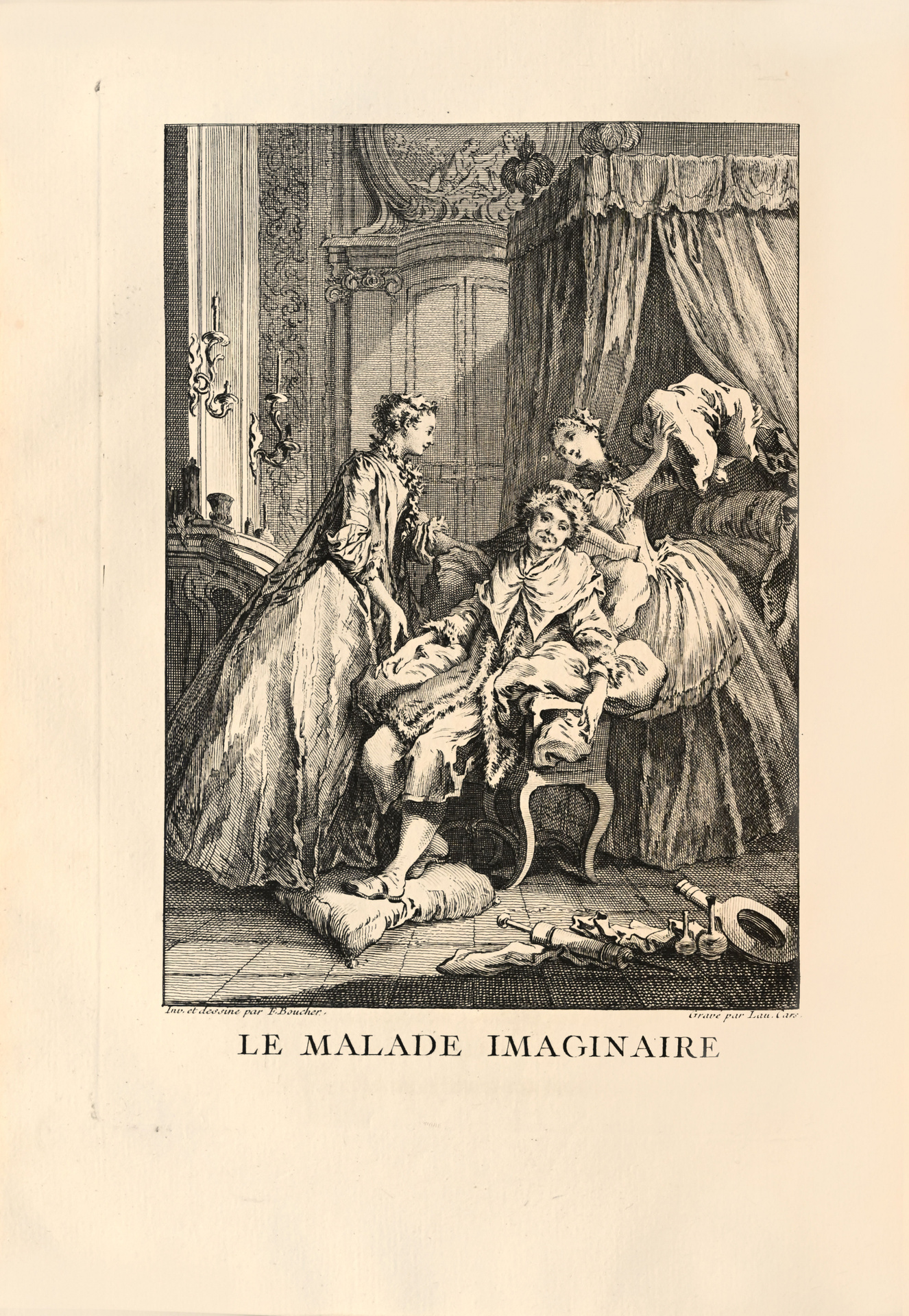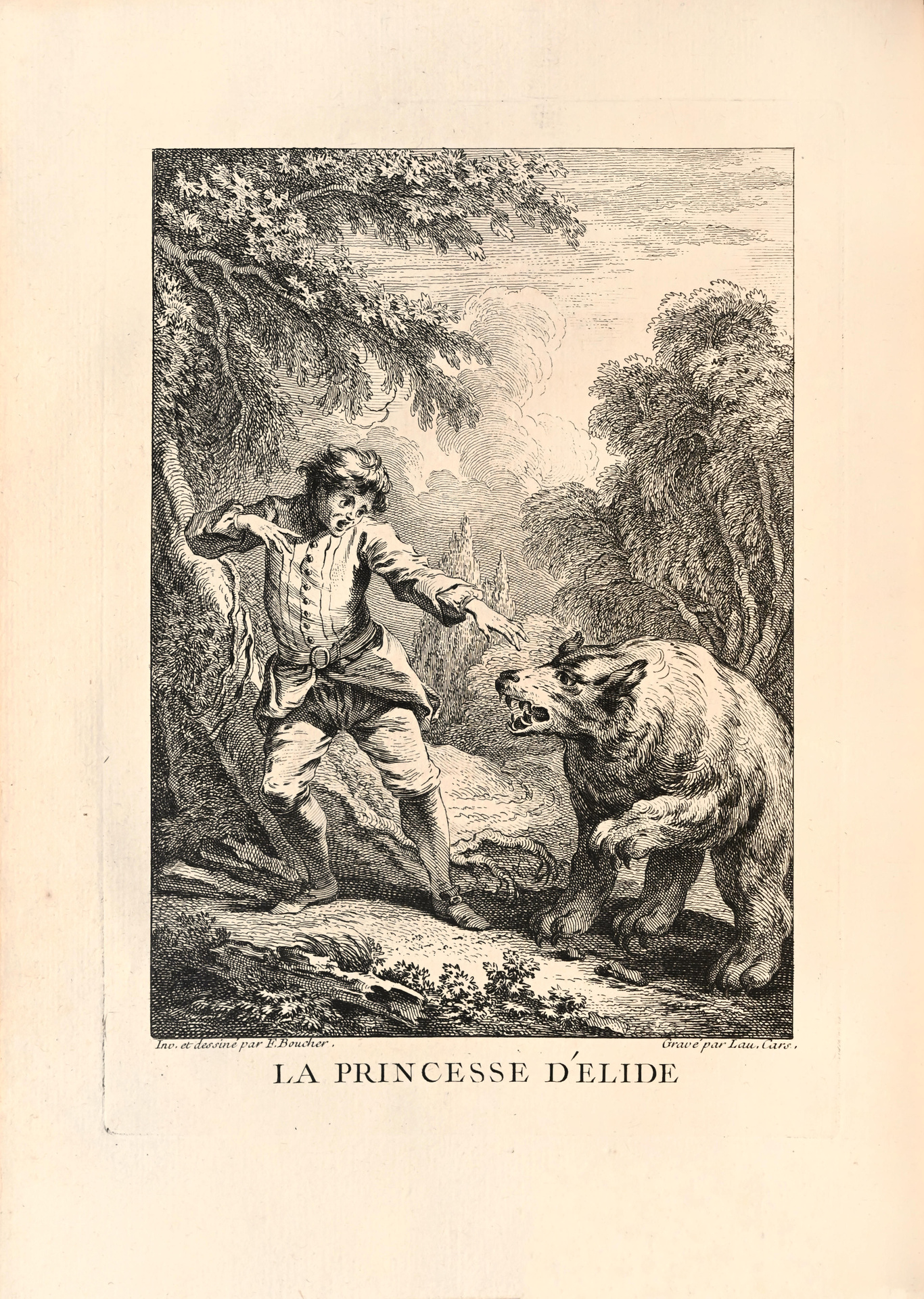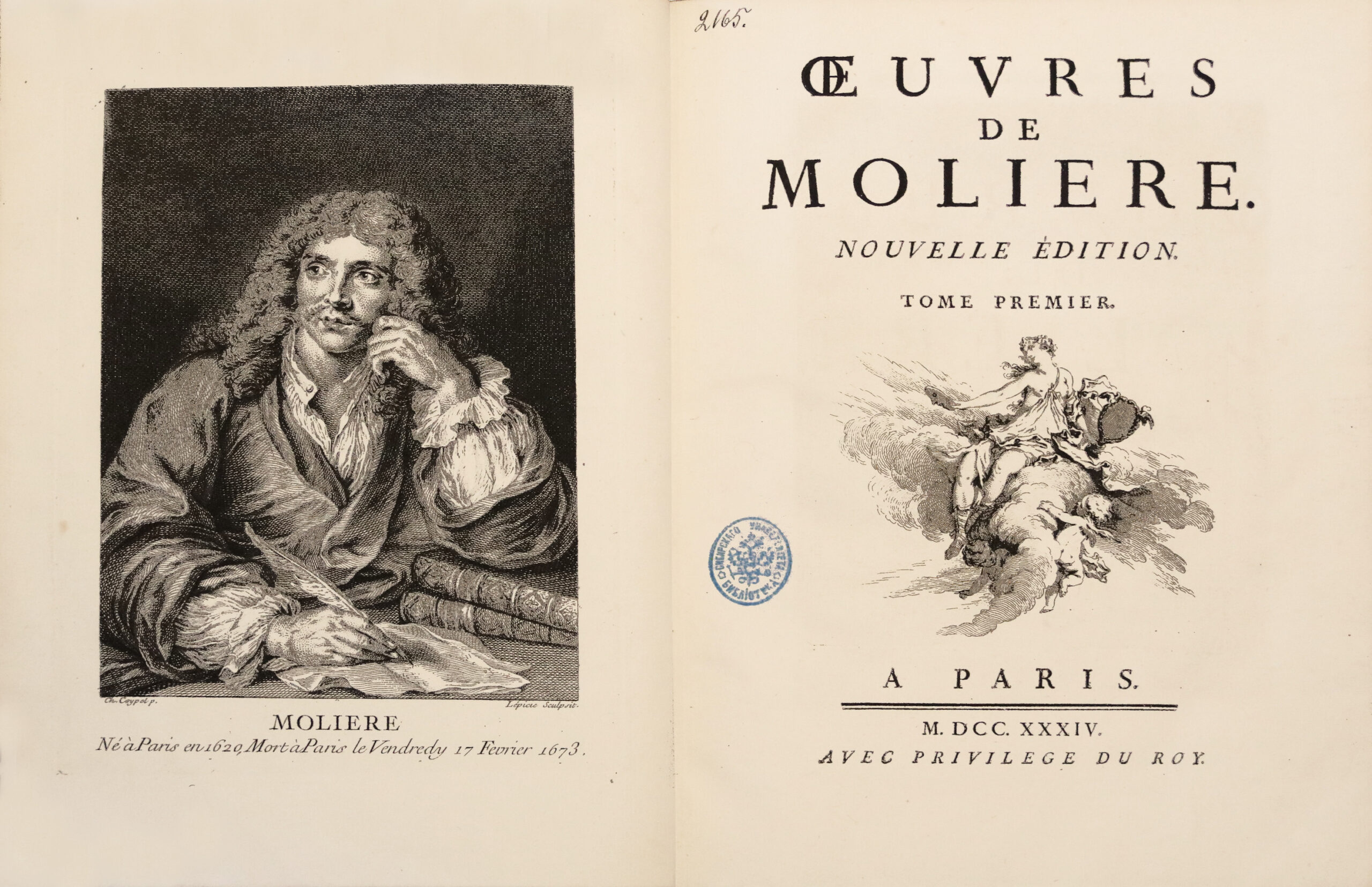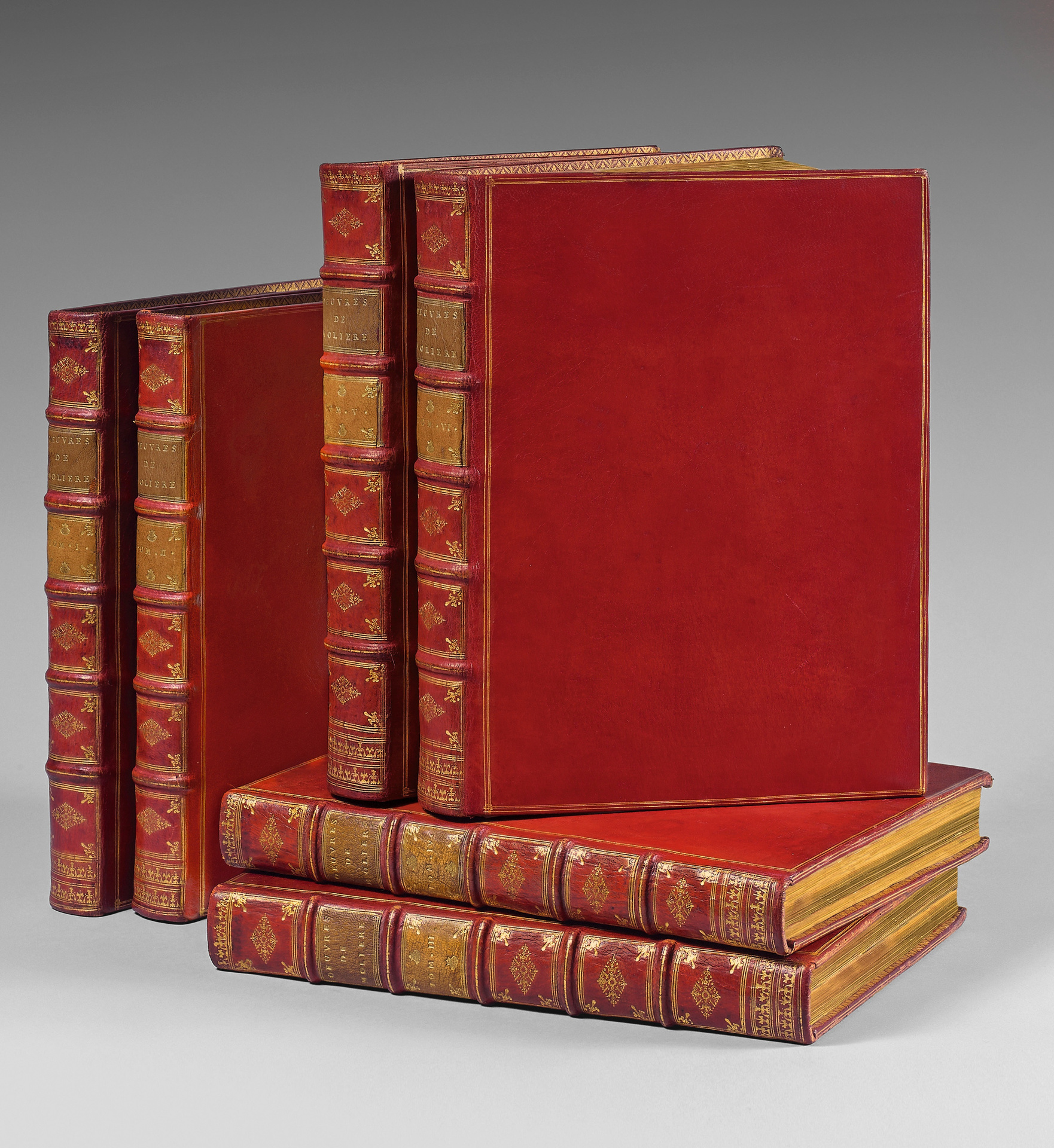Paris, 1734.
6 volumes 4to [289 x 216 mm] of : I/ (4) ll., lxx pp., 330 pp., 1 portrait of Molière and 4 plates out of pagination; II/ (3) ll., 446 pp., 6 plates out of pagination; III/ (3) ll., 442 pp., 6 plates out of pagination; IV/ (3) ll., 420 pp., 6 plates out of pagination; V/ (3) ll., 618 pp., 5 plates out of pagination; VI/ (3) l., 554 pp., 6 plates out of pagination. Red morocco, triple gilt fillet around the covers, ribbed spines decorated with gilt fleurons, olive green and citron morocco lettering-pieces, inner gilt border, gilt over marbled edges. Contemporary binding.
First state with the mistake at the word “comtesse ” page 360 of the sixth part.
“This is one of the most beautiful books from the first part of the eighteenth century“. Cohen, Manuel de l’amateur de livres à gravures du XVIIIe siècle, 712.
The work is illustrated with a portrait by Coypel, engraved by Lépicié, 1 fleuron on the title, 33 figures by Boucher, engraved by Laurent Cars, 198 vignettes and tail-pieces, of which many are repeated, by Boucher, Blondel and Oppenord.
It is when he returned from Italy, in 1731, that François Boucher became the society painter, the portraitist of fashionable women, spouses and financiers’ mistresses. Thus he illustrated Molière’s Works.
The edition was given by Marc Antonin Joly, author and dramatic censor, who carefully revised the text after Molière’s first editions. It was supposed to contain notes from Voltaire, J.B. Rousseau and Brossette, which have been replaced at the last moment by the ones from La Serre, author of Molière’s Life, placed at the beginning of the edition.
“His main work as a drawer and a vignettist is the series of drawings he made for Molière (1734), so rightly expressed and engraved by his former friend, Laurent Cars; a magisterial illustration that has been very criticized, and which is maybe what he best did as expression and costumes, for our great dramatic writer’s works.
These are truly some painter’s drawings. Executed with a great liberty of figure and a certain respect for tradition, still not far, they seem to be the exact interpretation of the great comic poet’s thought. The ones of ‘l’Ecole des Femmes’ and of the ‘Précieuses’ are particularly well done and have the fine smile of a figure and the physiognomy of a woman of that time.” Roger Portalis, Les Dessinateurs d’illustrations au Dix-Huitième siècle.
A precious copy from the first issue, illustrated with pure engravings on thick paper without foxing, bound at the time in a remarkably elegant red morocco binding.
Provenance: Jacques-Jérémie Roussel de la Celle, seigneur de Rocquencourt (1712-1776), general farmer, owner of the castle of La Celle Saint-Cloud (bookplate); Count Grigori Alexandrovitch Stroganov (1770-1857, armorial ex-libris with his motto: ‘Terram opes patriae sibi nomen’); then, his grandson, baron Gregoire Stroganov (1823-1878), ex-libris); library of the Imperial University of Tomsk, to which the Stroganovs had given their books (wet stamp on the title-pages); C. J.L. de Meulan (bookplate); Emile Moreau (1868-1950).
